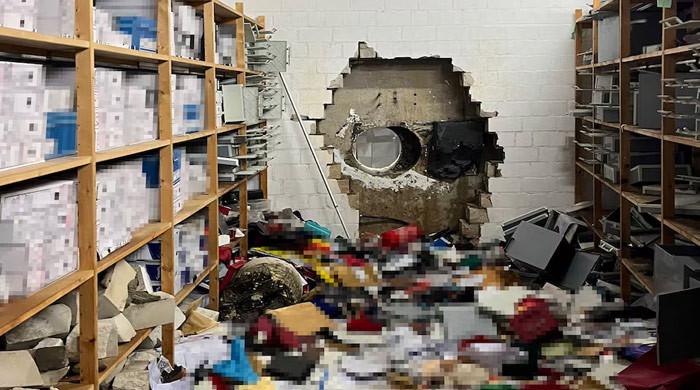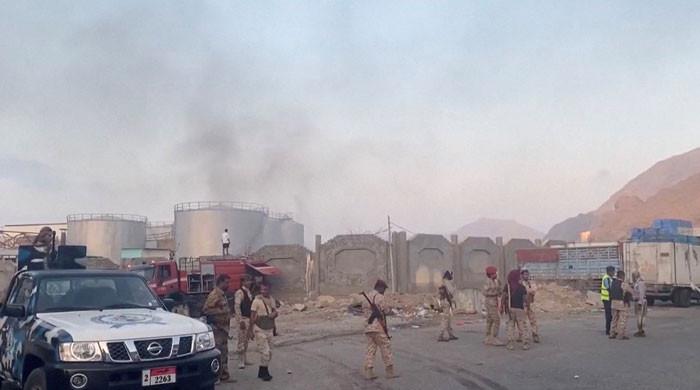Drug-related deaths hit record levels in England, Wales
There were 3,744 drug poisoning deaths, involving both legal and illegal drugs in England and Wales, registered in 2016
October 13, 2017

LONDON: Drug use and drug dependence are known causes of premature deaths, with drug poisoning accounting for 16 percent of deaths among people in their 20s and 30s.
“There were 3,744 drug poisoning deaths, involving both legal and illegal drugs in England and Wales, registered in 2016” revealed Office for National Statics (ONS) in a report.
This is the highest number of deaths since comparable statistics began in 1993. A two percent increase was noted as opposed to 2013, according to the report.
Drug-related deaths occur in a variety of circumstances, each with different social and policy implication.
The number of deaths from heroin and morphine (473) are at the highest level since comparable records began in 1987.
The report states that £10.7billion is the estimated social and economic cost of drug supply in organised crime in the UK. “On average in 2016, every five hours someone died after using heroin and/or morphine. It’s time for a radical solution,” the report urged.
Report pointed out that use of drug slowly declined from 1993 to 2000, but in 2010 death rates started to rise sharply again.
Statistics for England and Wales from the Ministry of Justice reveal that about 45,000 adult offenders were identified as drug users in 2010 to 2011.
“Every drug overdose death is a tragedy and it has made it easier for addicts to receive naloxone, a medicine that reverses the effects of a heroin overdose,” report claimed, adding “the drugs are easy to buy in streets, one can get it from any back street in any colliery village, and the only problem is getting cash”.
The government’s Advisory Council on the Misuse of Drugs (ACMD) warned this year about funding of drug treatment falling.
The ACMD said if resources were spread too thinly, there could be increased levels of blood-borne viruses, drug-related deaths and drug-driven crime.
A local charity said that the heroin found on the streets of the UK in 2010 was low grade and had often been cut with other substances, such as paracetamol or caffeine.
By 2014, the drug had reached 40 percent purity in some areas, while today purity levels are thought to occasionally be as high as 60 percent. This puts addicts at an increased risk of overdose.
Stopping the problem at source seems to be near impossible, but is there a more radical solution?
In a recent statement, Home Office said that any heroin or crack addict not in a treatment programme commits crime costing an average of £26,000 a year.
The annual cost in England of looking after children of drug-addicted parents is more than £42 million.
Opium production
Authorities have claimed that there are high chances that heroin being sold in UK is coming from Afghanistan.
UN Office on Drugs and Crime (UNODC) said, in a report, Afghanistan is the world's largest producer of the substance, which is the main ingredient in heroin.
“Growing opium is a crime in the country, but it is still a major cash crop for impoverished farming communities. The Taliban also taxes poppy production in areas it controls, which is a major source of income for its military activities.”
The opium produced from the poppy plant is used to make some of the most powerful medicinal painkillers, such as morphine. However, many nations cultivate their own supply for medicinal use, and Afghanistan's production of illicit opium is primarily sued for the illegal drug trade.
The Afghan government has a stated policy of eradicating poppy crops, but the crop is widespread in many government-controlled regions, and officials are often accused of turning a blind eye.
The local government knew about his crop, but "they also know it is the only way anyone can make decent money."
The southern region of the country is the most productive area, accounting for 54 percent of the entire national opium production.
Helmand province, which has seen a resurgent Taliban presence, is the single largest producer, with more than 80,000 hectares of poppy cultivation.
The region was a contested area between the Taliban and Nato-led forces, before the latter withdrew in 2014.
Meanwhile, Lancet medical journal has updated the situation and says: Shortages of morphine and palliative care are leaving 25 million people a year dying in “horrendous and preventable pain” including millions of children, journal further says that some governments are gripped by an “opiophobia”, a fear that letting morphine into hospitals will lead to addiction in the community.
In other countries cost is the main issue, or authorities are simply indifferent to the suffering of impoverished, terminally ill patients. Morphine can and should be made available for “pennies”,









